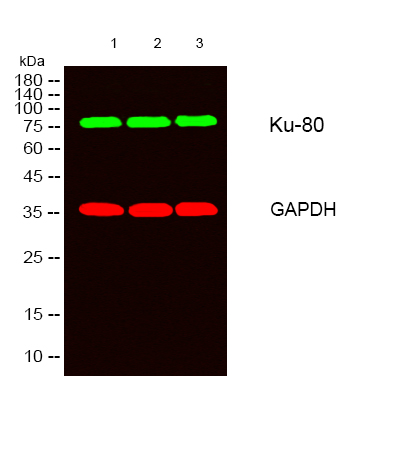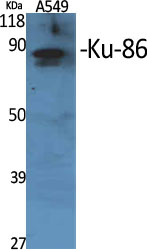IL-33 rabbit-FC recombinant protein
- Catalog No.:YD3109
- Reactivity:Human;
- Purity:
- >90% as determined by SDS-PAGE
- Protein Name:
- Interleukin-33
- Sequence:
- Amino acid:110-270,with rabbit FC tag.
- Formulation:
- Phosphate-buffered solution
- Storage Stability:
- -15°C to -25°C/1 year(Avoid freeze / thaw cycles)
- Other Name:
- IL33;C9orf26;IL1F11;NFHEV;Interleukin-33;IL-33;Interleukin-1 family member 11;IL-1F11;Nuclear factor from high endothelial venules;NF-HEV
- Background:
- The protein encoded by this gene is a cytokine that binds to the IL1RL1/ST2 receptor. The encoded protein is involved in the maturation of Th2 cells and the activation of mast cells, basophils, eosinophils and natural killer cells. Several transcript variants encoding different isoforms have been found for this gene. [provided by RefSeq, Sep 2015],
- Function:
- caution:Was originally (PubMed:12819012) thought to one of the key factors that controls the specialized post-capillary high endothelial venules (HEV) phenotype found in organized secondary lymphoid tissue and to be nuclear localized.,function:Cytokine that binds to and signals through IL1RL1/ST2 and its stimulation recruits MYD88, IRAK1, IRAK4, and TRAF6, followed by phosphorylation of MAPK3/ERK1 and/or MAPK1/ERK2, MAPK14, and MAPK8. Induces T helper type 2-associated cytokines.,PTM:Proteolytically converted to a mature form by CASP1.,similarity:Belongs to the IL-1 family. Highly divergent.,tissue specificity:Expressed at high level in high endothelial venules found in tonsils, Peyer patches and mesenteric lymph nodes. Almost undetectable in placenta.,
- Subcellular Location:
- Nucleus . Chromosome . Cytoplasm . Cytoplasmic vesicle, secretory vesicle . Secreted . Associates with heterochromatin and mitotic chromosomes (PubMed:17185418). The secretion is dependent on protein unfolding and facilitated by the cargo receptor TMED10; it results in protein translocation from the cytoplasm into the ERGIC (endoplasmic reticulum-Golgi intermediate compartment) followed by vesicle entry and secretion (PubMed:32272059). .
- Expression:
- Expressed at high level in high endothelial venules found in tonsils, Peyer patches and mesenteric lymph nodes. Almost undetectable in placenta.

